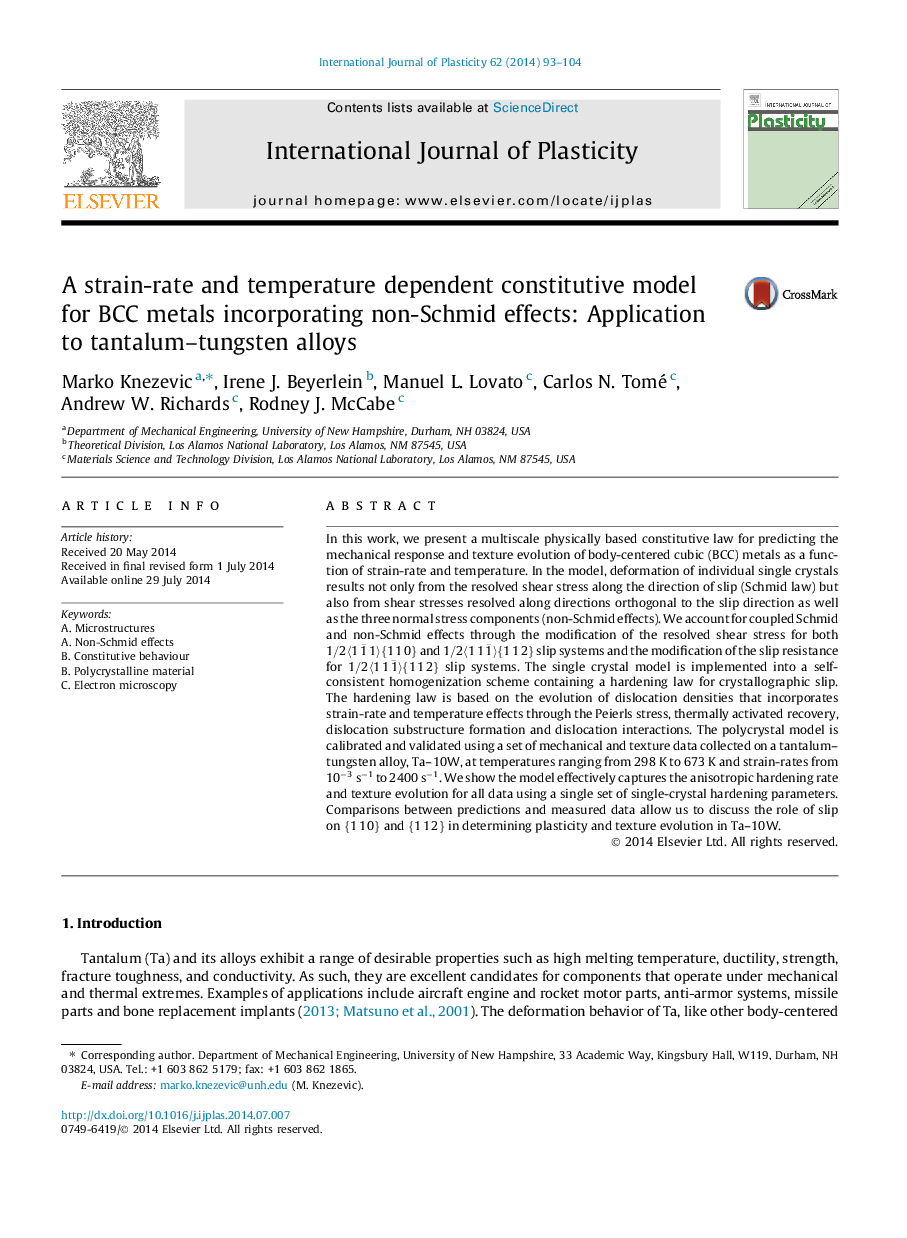| کد مقاله | کد نشریه | سال انتشار | مقاله انگلیسی | نسخه تمام متن |
|---|---|---|---|---|
| 786460 | 1465611 | 2014 | 12 صفحه PDF | دانلود رایگان |

• Measurements and predictions of mechanical response and texture are reported for Ta–10W.
• Polycrystal model for BCC metals that includes local non-Schmid effects is presented.
• Strain-rate and temperature effects are included via Peierls stress and dislocations.
• Strong effects of strain rate and temperature on plastic anisotropy are predicted.
In this work, we present a multiscale physically based constitutive law for predicting the mechanical response and texture evolution of body-centered cubic (BCC) metals as a function of strain-rate and temperature. In the model, deformation of individual single crystals results not only from the resolved shear stress along the direction of slip (Schmid law) but also from shear stresses resolved along directions orthogonal to the slip direction as well as the three normal stress components (non-Schmid effects). We account for coupled Schmid and non-Schmid effects through the modification of the resolved shear stress for both 1/2〈11¯1〉{110} and 1/2〈111¯〉{112} slip systems and the modification of the slip resistance for 1/2〈111¯〉{112} slip systems. The single crystal model is implemented into a self-consistent homogenization scheme containing a hardening law for crystallographic slip. The hardening law is based on the evolution of dislocation densities that incorporates strain-rate and temperature effects through the Peierls stress, thermally activated recovery, dislocation substructure formation and dislocation interactions. The polycrystal model is calibrated and validated using a set of mechanical and texture data collected on a tantalum–tungsten alloy, Ta–10W, at temperatures ranging from 298 K to 673 K and strain-rates from 10−3 s−1 to 2400 s−1. We show the model effectively captures the anisotropic hardening rate and texture evolution for all data using a single set of single-crystal hardening parameters. Comparisons between predictions and measured data allow us to discuss the role of slip on {110} and {112} in determining plasticity and texture evolution in Ta–10W.
Journal: International Journal of Plasticity - Volume 62, November 2014, Pages 93–104